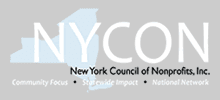The OD featured a helpful article on fundraising for nonprofits stressing the importance of relationships, which is a good follow up to the recent program held at Herkimer County Community College. As the article relates:
As nonprofit organizations and professional fundraisers court today’s savvier donors, it’s not always about who can throw a bigger, splashier fundraiser or a swankier black-tie event.
“If you’re looking at events and things that are going to pull people out, the level of competition is the same (as before the recession began),” said Katherine Lowe, membership chair and member of the board of directors for the Central New York Chapter of the Association of Fundraising Professionals. Lowe also is community relations director of Meals on Wheels of Syracuse.
The real competition is in reaching donors with your mission, because that’s how they decide where to place their hard-earned dollars, Lowe said. Nonprofit organizations and fundraising professionals are focused on building long-lasting, solid bonds with individuals in their communities.
Giving them something different
Lowe emphasized that matching an event to an organization is a unique fit — what works for one organization may not work for another.
A volunteer-based organization may enjoy awards dinners that single out and honor a volunteer each year, but that wouldn’t work for everybody, she said. Instead, the trend is toward events that are tailored to the community, its desires and what it can support.
“I think it’s something you really look to your donors (for),” Lowe said.
Maria Alberico, regional director of Special Olympics New York, Central Region, agreed.
“It’s important to know your demographic,” she said. “You have to know what people are interested in.”
But when the Special Olympics of New York asked their fundraisers what they wanted, the answer was clear — something totally different.
Special Olympics responded by organizing events such as The Polar Plunge, where sponsored fundraisers take a winter’s dip into icy waters to raise money.
The event has become one of their most popular fundraisers. The Central Region had 400 participants last year.
“It’s that kind of wacky, thrilling, daredevil kind of event that doesn’t get lost in the walkathons,” she said.
The organization’s most recent event, Over the Edge, was held Thursday. It’s a fundraiser in which donors rappel over the side of a building to raise money. It had been successful in other areas of the state, Alberico said, with more than 150 participants in 2010.
In the event’s first year, 40 participants rappelled down the side of the Adirondack Bank Building on Genesee Street in Utica.
While events like Over the Edge or The Polar Plunge present unique opportunities for their participants, it’s important to make sure the connection is made between the event and the mission of the Special Olympics, Alberico said.
“We serve 51,809 athletes in the State of New York,” Alberico said. Nearly 7,000 of those athletes are in the Central New York region.
One of those athletes, basketball player Art Lindsey, went “Over the Edge” at a media day prior to the fundraiser, bringing attention back to the organization’s mission.
“In the end, this is why we do this. We have a great group of folks,” she said.
Making a connection
While Special Olympics of New York found in this case that donors were looking to walk on the wild side and raise money, Lowe said that’s not always the norm.
She said fundraising professionals are becoming cautious about planning “huge, splashy events.” They often are more expensive to put on and can cut into the net proceeds.
Stevens-Swan Humane Society has been able to effectively use its fundraisers to build upon the strong connection the community already feels to animals and the organization’s mission.
“It seems everybody has a connection with animals,” said Jerry Kraus, public relations director for the Stevens-Swan Humane Society. “So when we ask people to help us, and help our animals, it’s not really a tough sell for us because people identify with what we’re doing there: sheltering stray, homeless and abused animals.”
In fact, they identify with the organization’s mission to such a degree that community members frequently organize events and donate the proceeds to the humane society.
Last weekend, for example, the annual Animal for Animals benefit concert event took place. It was organized in memory of Ric “Animal” Morehouse by his stepson.
As a professional fundraiser, Lowe said, that is the ideal scenario: to have people who are willing to put together an event and donate the proceeds to your organization.
Whether they’re at an event organized by the humane society or helping out one of their many supporters, Kraus said the special events raise money but also highlight the work that the shelter is doing.
They bring shelter dogs the Wiggle Waggle Walkathon each September – even finding some of them homes at the event.
“When we get on the telethon, we’re bringing out some of the cases of abuse,” Kraus said. “So people know what we do at the shelter has some real, tangible results.”
And when it comes down to it, that’s what fundraising is all about, Lowe said.
“Fundraising, at its core, is really about relationship building,” Lowe said.
“It’s not about producing a one-shot deal,” she said. “It’s more about connecting to those individuals who are going to support your mission regardless of the economy.”
Subscribe to:
Post Comments (Atom)













No comments:
Post a Comment